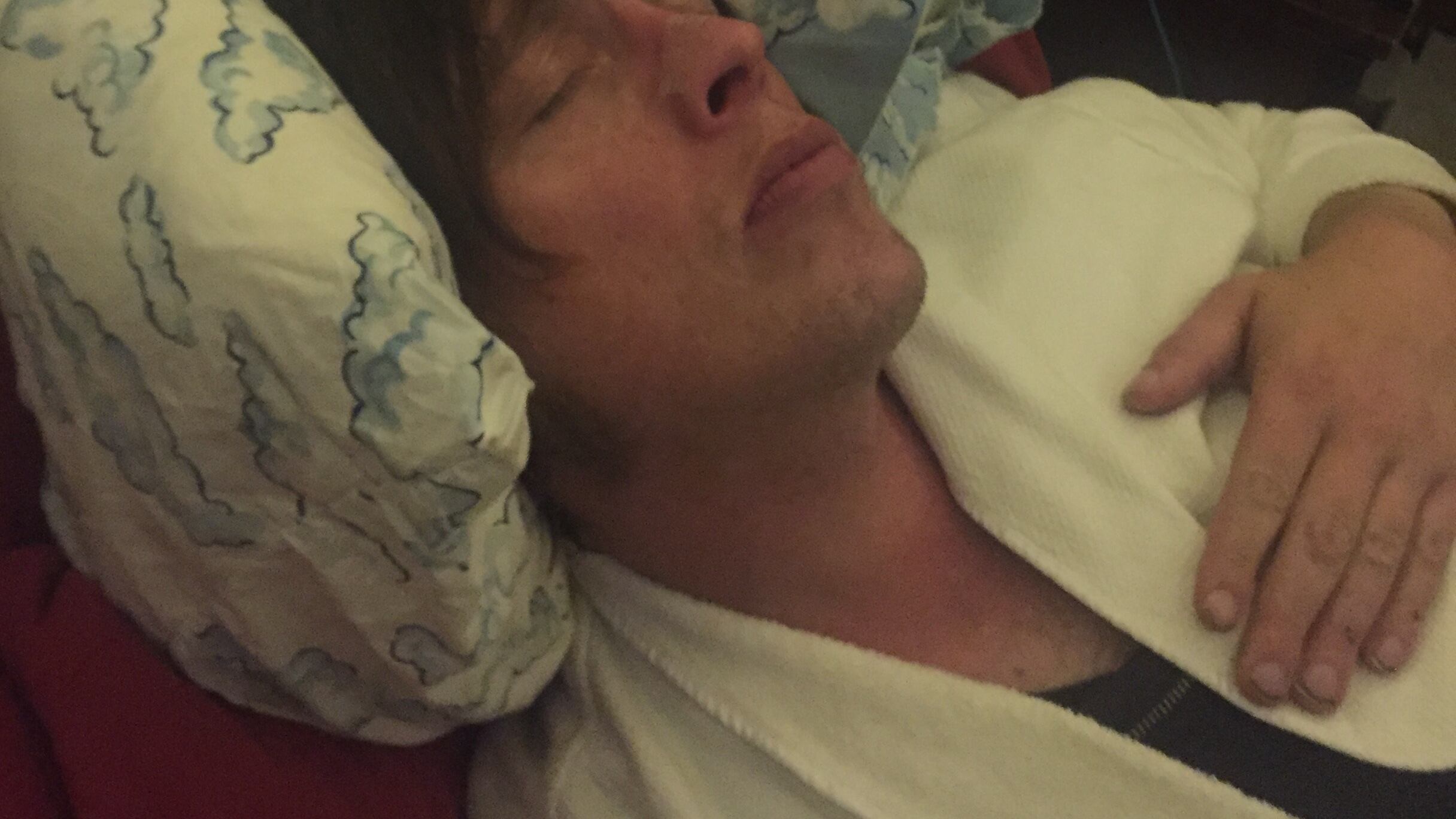I do not snore, so far as I know. Friends and family have argued (loudly, angrily, at length) against this position, but, still, there's no real evidence. Recordings can be faked, after all, and the supposed proof—a godawful racket like the mating call of an asthmatic locomotive—sounded wholly unfamiliar.
I suppose I also do not care if I snore. At least, I did not until recently falling for a light sleeper that regularly consigns me to the futon. I do not, once again, snore, but this seemed an insoluble hurdle regardless. Snoring isn't a matter of lapsed effort, and the primary cures involved either surgery or a tank-assisted mask styled after the Predator's.
Or, as my partner suggested with rising fury after each of their commercials, Breathe Right strips.
I'd vague memories of NFL players hawking inexpensive nostril-expanding bands toward the end of the 90s. Over the years, there'd be some news over disputed usage of nasal dilators. Competitive cycling authorities had evidently decided the strips represented no definable performance-enhancement. After some tumult, California Chrome was allowed to don horse-sized equivalents for his bid to win the Triple Crown. Still, if the company had once targeted athletes seeking a painless edge, though, Breathe Right marketing now focuses squarely on the snorer and the damage done.
Not to say the devices are explicitly pitched toward the henpecked husband market, but the front cover of the box does spotlight an aspirationally-unshaven bro dozing ruggedly within the embrace of an outsized nasal strip, mirroring ads for the Gillette Fusion ProGlide. He reappears in the accompanying literature below an illustrated guide to sinus inflammation and subsequent Breathe Right-derived cessation of suffering, though the evils of congestion are evidently visited upon an android for reasons unknown.

The other side of the instructional pamphlet does employ a woman to show us just how strips should be applied (spoiler: on the nose) with all the provocative condescension of a hardhat-clad model in 80s deodorant commercials. Rather more pointedly, the woman on the reverse of the packaging closes her eyes less from slumber than a blissful relief from the product's sheer existence, as another blown-up razor-aping image seems to be shot directly into her even lower cortex. As well, she alone seems to be rocking the vintage white-capped bands that once made Jerry Rice appear to be recovering from outpatient rhinoplasty.
Sheathed in antiseptic wrap, the newest breed of strips are forged from clear plastic and resemble double-thumbed fists exploding from each end of a small rectangle—a deceptively-simple hallmark of streamlined aggression vaguely resembling the Metallica logo or Voltron faceplate.
When worn, the small transparent bump looks like a slighly-broken nose and feels like the clip from invisible pince-nez. Anyone even vaguely afflicted by insomniac tendencies may well find the strips' presence so intrusive as to render the issue of snoring irrelevant. As someone who's dozed through root canals, I drifted off without concern. However irritating when first applied, the widened nostrils certainly seemed to gather more air and, if anything, quickened my retreat toward slumber.
As well, though I tend to sweat rather more than the average fellow—strict cardio dream regimen—the stickum never wavered, which proved an unexpected asset. When asked whether or not I intended to wake up any time soon, I'd gesture toward the strip, and questions normally repeated in increasing volume would instead wither on the vine. Dreamland, clearly, was on the agenda since I was already wearing the gear. Strap on a pair of skis, nobody's gonna guilt you off the slopes.
As for the strips' intended goal, I asked my partner to share her impressions. "Still snoring," she said, not unkindly, "but you were…less exuberant than usual." Merely taking some measures to ease her discomfort seemed to pay dividends well beyond any actual snore-killing benefits, which further research suggested more and more unlikely.
Unfortunately, determining clear consensus was impossible given the sheer weight of contradictory reports—some surely funded by the deep pockets of a booming nasal dilation industry for the purpose of obfuscating results.
So long as Big Air keeps muddying the waters, we shan't easily discern the truth, but a few things may be surmised. While properly-utilized strips shouldn't do any harm—aside from perhaps allaying medical care for dangerous conditions out of false confidence Breathe Right held salvation—the scientific community seemed to conclude only cold and flu sufferers combating a weekend's plugged nose would enjoy quantifiable rewards, and even those were negligible. Turns out, Breathe Right strips look like band-aids because they are band-aids: not much help against the gaping chest-wound of sleep apnea but, for minor congestion, a potentially handy stitch in time.
Would I purchase another Breathe Right box? Alas, I'd made the mistake of sharing the aforementioned findings with my partner, thereby diminishing any hope of effectiveness. To be sure, the strips may well work as temporary salve for stuffed-up cokeheads or the terminally allergic. But, in terms of the problem theoretically addressed, any usefulness demands a shared delusion.
Athletes continue to rock the Breathe Right strips no matter how many studies deny their worth. That's the wonder of psychosomatic remedies. If you believe they work, they do.
(Cool Stuff is a new feature at Willamette Week where we feature product reviews, roundups, sales and other commerce and shopping-oriented content. All Cool Stuff reviews are editorially independent, meaning we provide honest reviews and aren't paid by the brands we write about. If you do choose to purchase something after following one of our links, Willamette Week may receive a commission, which helps fund our journalism.)

